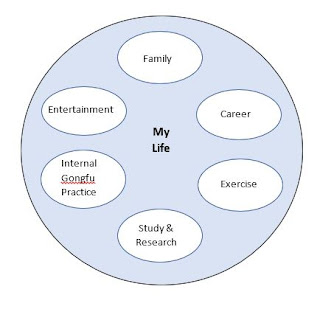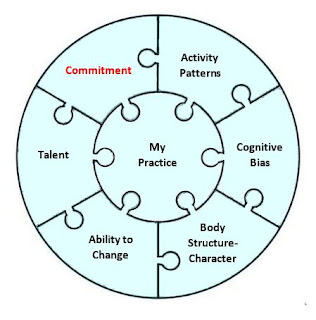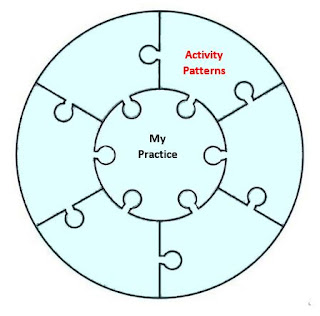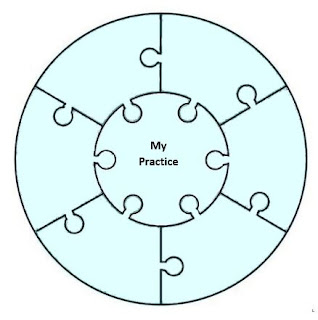The title of this series is: Mastering Internal Gongfu: Are you Ready? When I was asked this question twenty years ago, I responded with an emphatic “Yes!” As the years went by and I discovered the amount of work involved in mastering this art, I slowly came to realize that, no, I was not ready. Sure, I was willing to give it a try but I was not appropriately prepared to learn.
This realization then shined a light on the question asked by many internal gongfu practitioners, “Why does it take so long to get it?” To this, the typical response is, “If getting it were that easy, then everyone would be a master.” Hopefully, this series of posts has provided a more thoughtful response to this question.
Brief Review
In the Introduction to this series, I mentioned how I had considered my life as a variety of compartmentalized activities and one of these compartments was internal gongfu practice. In this way of perceiving, each activity was isolated from and not influenced by any other and each activity required its own skills. Over my years of practicing Wujifa, I learned that my development is as much influenced by what happens outside of class and practice as by what happens during class and practice.
As I pondered the question “Why does it take so long to get it?”, the insight occurred to me that these outside influences either support or hinder my development and these could be distilled into a set of components. Thus, the six components of My Practice was born. As I further reflected on my years of practice, I recalled various attitudes or situations associated with these so-called components. Thus, the Internal Gongfu Progress Matrix was born. To complete this picture, I added some insights regarding instruction in Sources and Levels of Instruction. And now, here we are at the end of this series.
Considering Components
It is possible that the components of My Practice that I presented here will not hold true for everyone. I was exploring how to articulate an insight based on my years of practice. You may want to add or modify or remove a component according to how you think about the various non-curricular aspects that influence your formal training curriculum.
If these components are not readily apparent to you, give it some time. The inability to notice something at the outset is not a reason to dismiss the possibility that it exists. It may take some time for you to notice the connection regarding how various aspects of your life influence your practice and vice versa. After all, it took me over thirty years of training before this insight came to me!
You may think that the idea of components is dumb or irrelevant, that there are no components, or that I’m going off in the wrong direction, that I just need to think less and practice more. I used to think that way too. I would encourage you to at least consider the possibility. You may discover a clue to that next step.
At the very least, this series will give you an insight into how I approached my practice in the past and how I am understanding my practice these days.
My Practice as a Puzzle
We have a saying in Wujifa that “Noticing changes everything.” Notice how and where these components show up in your practice and in your life. Notice how they interact. Notice how one component connects to and influences another and another. Notice that this is a new kind of kinesthetic puzzle.
Learning Strategies
When I was learning Tai-chi forms and push-hands, I applied the same learning strategy that served me well in learning other physical activities. The result was about the same level of achievement; a kind of fluency at the level of gross motor skills and not much more.
When I began practicing Wujifa zhan zhuang, I eventually discovered that the learning strategies that worked well for me in other situations simply did not work here. I eventually learned that I needed to learn how to learn in the context of internal gongfu. I needed to develop a new learning strategy. I needed to learn how to discover connections and build congruence. I needed to literally learn how to get my compartmentalized life together.
I now know that the conditioning or preparatory phase of training largely involves developing this new strategy which gives me crucial insights and perspective.
A Brief Word About Eating Bitter
“Eating bitter” typically refers to enduring muscle pain. In addition, the “bitter” in internal gongfu can also refer to emotional pain that may be noticed on the road to congruence.
Comparing Models
Now that I’ve come to the end of this series, let’s compare the two models side by side. I know how these two models are different for me. My question to you is, Which model illustrates how you would represent your practice? Or would you conceptualize and illustrate your practice differently?
|
|
|
In Closing
So, there you have it. The secret to mastering internal gongfu. Oh? Did you miss it? Well, let me spell it out for you; BE CONGRUENT! Stop compartmentalizing your life and your body! Notice connections! Think about it a second. If you can’t notice the connections between the "components" that I spelled out for you in this series, then how the heck are you going to notice the kinesthetic connections within your own body which can be multiple times more subtle?
Look, the preparatory or conditioning phase of training is all about discovering connections and developing congruence. Break down the conceptual walls between this part and that part of life, between mind and body, within the body, deeper and deeper into the body. Discover the congruence within your own body and between your body and mind and between your practice and your life.
When I started Wujifa training, if you told me then that I’d be writing this now, I would have said that you were full of it. “Just show me what to do!” But that’s the point. This is what to do! And I can’t show you specifically what you need to do. I can only point the way. This series is another proverbial finger pointing at the moon; the whole moon, the round moon.
So back to the question, "Why is it taking me so long to get it?" Do you understand now? You see, it comes down to compartments vs. connections. The longer you hold onto compartments, however subtle they may be, the longer it takes. The sooner you get to connection and congruence, the sooner you get through the first door! Now you are ready!
Bottom line, internal gongfu is about putting your whole self into practice! Learn to eat bitter and appreciate it for all that it will help you understand. And then using the learning strategy that you developed in the conditioning or preparatory phase, continue refining and discovering all you can because there is always more to learn and more doors for you to discover and open!
Previous post in this series: Mastering Internal Gongfu: Are You Ready? Source and Level of Instruction
Happy practicing everyone!














